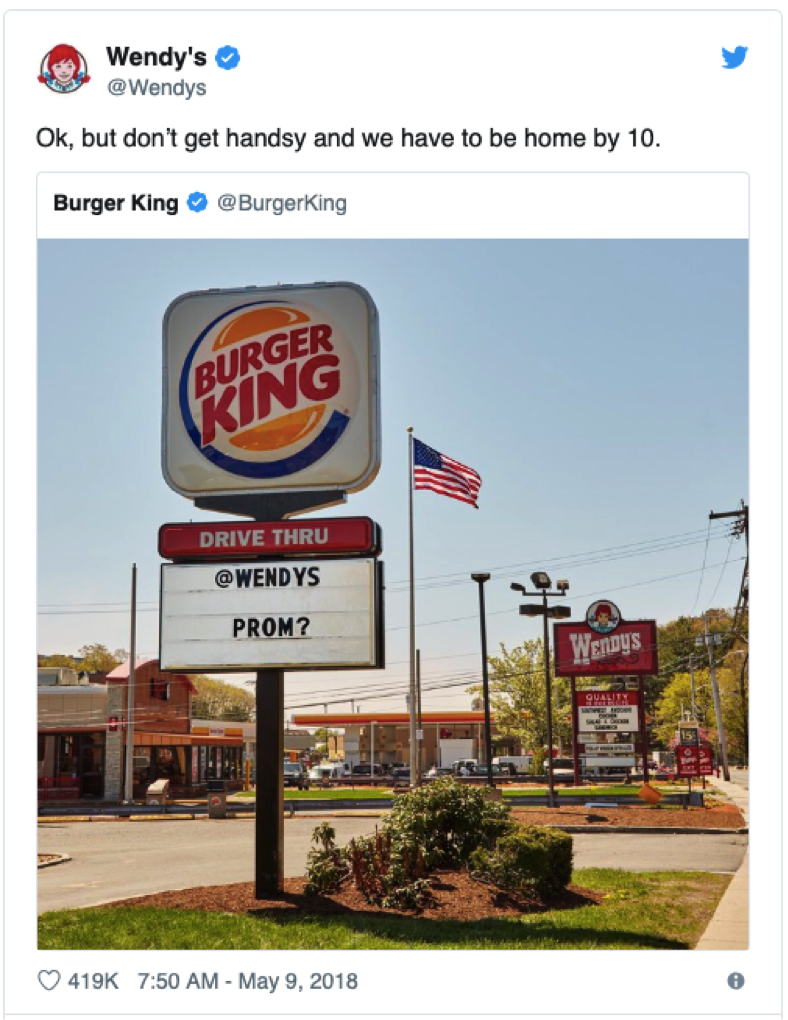What Financial Institutions Can Learn from Fast Food Chains about Social Media
By Julie Grimm, Summer Intern at Strum
Let’s be honest, you don’t look to your financial institutions’ social media pages to see fresh and engaging content.
If you took a few minutes to browse FI’s social profiles, you would find much of the same content posted over and over again (#twinning). Is this because financial institutions have found the optimal formula for the perfect post that will bring them the most value? If only that was the case.
One of the biggest challenges financial institutions face is differentiating themselves. Every bank and credit union’s Facebook, Instagram and Twitter page offers the same content: articles on how to save for retirement, get out of debt, or obtain a new credit card. While all of this information is important, it is not the type of content that will draw people in and keep them coming back for more. Because of rates and regulations, financial institutions operate in a tight space with product offerings. But does this have to mean that their social media content is doomed to the same fate?
When it comes to social media, out-of-the-box thinking is a must. Consider Wendy’s, a fast food chain that has 3 million followers on Twitter. Wendy’s didn’t obtain these followers purely because people love their Frosties and French Fries. They got their following by creating a Twitter account full of humorous and rather sarcastic tweets.
I follow Wendy’s because their Twitter battles with other fast food chains never fail to make me laugh. And when that late night craving for ice cream and fries hits, my mind immediately goes to the brand that is constantly showing up in my Twitter feed.
Another fast food chain (if you don’t believe me, look it up) that does an excellent job on social media is Starbucks. A central characteristic of the Starbucks’ brand experience is their customers’ ability to fully customize anything about their coffee order. Starbucks encapsulates this “customer first” mentality and uses it as one of the pillars of their social content strategy. Amid the pictures of Iced Caramel Macchiatos floating on clouds, Starbucks shares content celebrating different ways that consumers are creative with their brand.
Apparently their social media aesthetic is just as pleasing as their Pumpkin Spice Lattes because they have 11.3 million followers on Twitter, 17.7 million followers on Instagram and 36 million followers on Facebook.
Wendy’s was able to make their brand stand out in the incredibly saturated fast food burger market. Additionally, they were able to foster a space for positive customer engagement on a platform where there is not much to go around. They have found the perfect balance of promotional content and customer engagement that keeps customers informed and smiling. Starbucks has one of the largest followings on social media, for a fast food chain, because they care about their customers - by showing that they see and celebrate their individuality.
This is the type of positive engagement that financial institutions too frequently lack. Instead of engaging content that allows them to have positive dialogue with their customers, they flood their social channels with a sea of posts about how to boost your credit score. No wonder their posts are often littered with negative comments from frustrated customers.
The question that financial institutions need to ask is, “how can we showcase our brand personality to connect with consumers while keeping them informed along the way?” For Wendy’s, it was humor and a sassy tone. For Starbucks, it included customer creativity. For a financial institution it is all about finding a unique point of view that is authentic to the brand.
One place to look for inspiration is your staff. Maybe a big part of your staff is passionate about travel, or about cooking, or about fitness. These themes can become part of your social content strategy, and help your organization show more personality than just products. Whatever the case may be, if your employees are invested, it will not only help create more engaging content, but this can also help with organic reach.
The other consideration is that demonstrating a consistent brand does not mean posting the same content on every social media platform. Facebook, Instagram, Twitter and LinkedIn are all very different, with different audiences and platform strengths. FIs should create content relevant to the demographics that use each social media platform the most. According to Sprout Social, the majority of all Americans in every age range use Facebook. But, if you really want to get in front of a younger audience, Instagram is the way to go.
Finally, don’t be afraid to experiment (within your compliance team’s guidance, of course)! Have fun and see what gets your followers engaged. They might love interactive Instagram stories, Twitter polls or Facebook videos. Try different tools out and see what works for your brand and your audiences.
At the end of the day, your social media is a reflection of your organization - and how your brand is perceived on social media will impact what consumers think about you. The more you can identify what you as a brand - and the people who help deliver that brand experience every day - are passionate about, the more you will stand out and earn the engagement you want.
Julie is an intern at Strum, and a recent graduate of University of Washington with a BA in Marketing.





